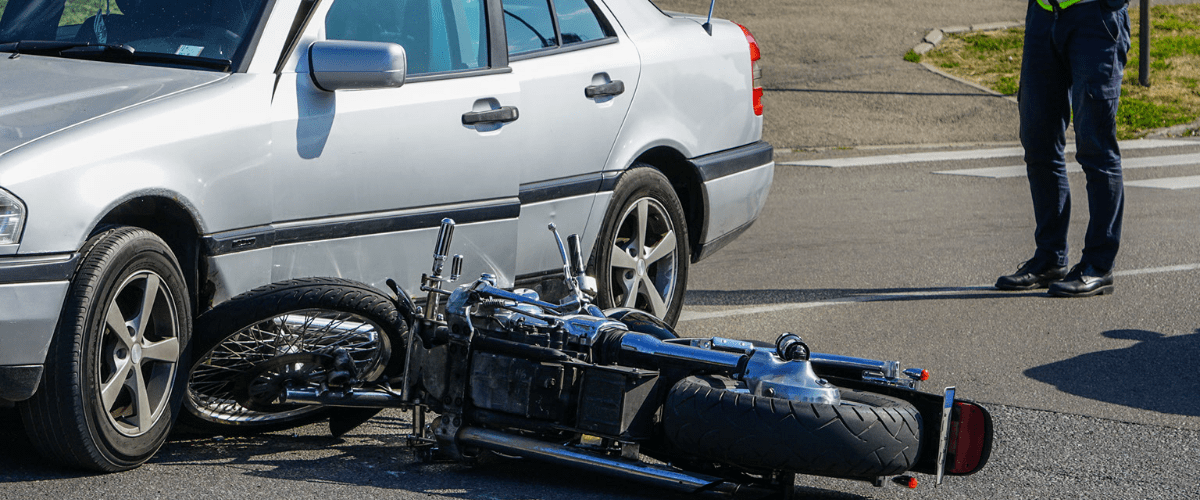Motorcyclists Matter: Don’t Be a Road Hog

Motorcyclists flock to the roadways in Albuquerque and across New Mexico during the summer months. More favorable weather increases the likelihood of encountering a motorcyclist while you’re out and about. Learning how to share the roadways instead of becoming a road hog can help prevent a devastating accident that opens you up to a personal injury or wrongful death lawsuit.
Whether you’re driving a motorcycle or an extended cab passenger truck, you have an equal right to the roadways. All drivers – regardless of their mode of transportation – should practice caution and courtesy for others to prevent crashes.
Here are some things all motorists can do to ensure they’re not being road hogs.
Check your blind spots
Every vehicle has blind spots that increase the risk of collision. On most automobiles, those blind spots are located at the front, rear, and both sides behind the windshield pillars. Some newer vehicles come equipped with safety systems that monitor these areas and alert drivers when they’re in danger of striking another motorist. While these features can be handy, they can fail.
Motorcyclists can change lanes without much warning. Since they are smaller and more difficult to see than full-size vehicles, you should always shoulder check and be mindful of where others are on the roadways, especially motorcyclists.
Learn (or relearn) your hand signals
Motorcycles, like other motor vehicles, have brake lights and turn signals. Some bikers still may use hand signals to alert other drivers of their intentions. Hand signals are easy to learn and can mean the difference between colliding with a motorcyclist and avoiding an accident. Here’s a quick refresher on the most common hand signals motorcyclists might use.
- Left turn hand signal. Extend the left arm straight out to the side. Your hand should be open with your thumb pointing upward. Motorcyclists can use this hand signal to indicate they plan to make a left turn or change lanes to the left.
- Right turn hand signal. Extend the right arm straight out to the side. Your hand should be open with your thumb pointing upward. Motorcyclists can use this hand signal to indicate right turns or lane changes to the right.
- Road hazard signal. Sometimes motorcyclists encounter road hazards like loose gravel or other debris. They may u se their pointer fingers to alert other riders to the danger to prevent an accident.
- Slow down hand signal. Place the palm of the hand parallel to the ground. Then, move it up and down in this position. This motion indicates motorcyclists plan to gradually decrease their speed.
- Stopping hand signal. Place the hand straight down with the fingers pointing toward the ground. The palm of the hand should be facing the driver behind you.

Make space for everyone
Riding a motorcycle can be a fun and freeing experience. It also can be terrifying because you’re at the mercy of other motorists on the roadways. Most motorcyclists wear safety gear when riding, but it’s not a guarantee they won’t sustain serious injuries if you collide with them while driving your 4,000-pound (or more) vehicle.
One of the best ways to prevent crashes is to follow the 3-second rule. Doing so provides bikers with adequate space for making abrupt stops or dealing with other road hazards that can affect their speed and control of their motorcycles.
Pass with caution
Never assume a motorcyclist knows you’re behind or alongside them. Bikers deal with a lot of road noise when riding and may not hear you approach. If you’ve followed the previous rule about making space for everyone, then passing with caution shouldn’t be difficult.
Take these steps when passing to ensure everyone’s safety:
- Reduce your speed. It may seem counterproductive when trying to pass, but it’s one of the most effective ways of maintaining control of your vehicle and reducing the risk of high-speed collisions that can prove fatal for motorcyclists.
- Wait for confirmation. Most motorcyclists wave their hands or make other similar gestures if they see you behind them and realize you want to pass. If you’re not sure a biker sees you, slow down and maintain visual contact with them until you’ve safely passed.
Reduce driving distractions
Distracted driving is the number one reason for most automobile accidents today. Talking and texting on mobile phones cause the bulk of distracted driving crashes in New Mexico. Cell phones aren’t the only things taking drivers attention away from the roadways. Eating and drinking, fiddling with the stereo, and engaging with other passengers can all interfere with your ability to maintain focus behind the wheel.
Commit to keeping motorcyclists safe
Even when drivers take all the necessary precautions, accidents can happen. If you’re a motorcyclist who has been seriously injured because of another driver’s carelessness, you have a right to fair compensation. Schedule a free case evaluation with the experienced personal injury lawyers at Romero Law to discuss your options.
